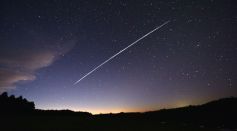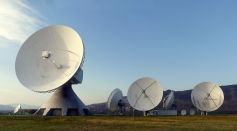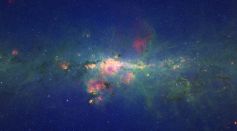Tags: Radio Waves
24 Black Holes Release Radio Waves in Unexplainable Burping Bouts Years After Ripping Stars

Newly Discovered Stellar Object Found To Flash Odd Radio Waves Every 22 Minutes; Archives Reveal That It Has Been Doing So Since 1988
Intriguing 'Ultracool' Star Emits Radio Waves Despite Having a Weak Magnetic Field, Challenging Astrophysical Norms

SpaceX's Starlink Satellites Pose Radio Astronomy Concerns with 'Leaking' Low-Frequency Signals, Study Finds

Aliens in 2029? Experts Claim Extraterrestrial Life Could Contact Earth After Intercepting Signal From a Previous NASA Probe

Radio Telescope Captures the Contemporary-Art-Like Heart of Milky Way Galaxy, Showcasing a Major Leap of Its Capabilities

World's Tiniest Antenna Created to Monitor Motions of Proteins Using DNA

Village's Broadband, Telephone Service Interrupted Daily for More Than 18 Months, but Why?
Follow-Up on the Alien Radio Transmissions and What they Could Mean for Researchers? Finding Stellar remnants far after the blast
Mysterious Radiowave Outburst Captured From Space in the Blink of an Eye
Cosmic Radio Burst Caught from Outside Our Galaxy
Most Popular

Say Goodbye to Dark Spots: The Science Behind Dark Spot Remover Creams

Persistent Coughs Are Everywhere: Here's What Experts Think Is Causing It

Ancient Hotspot Found to Have Created Great Lakes 300 Million Years Ago

Mysterious Structures Discovered Beneath the Pacific Ocean, Puzzle Scientists




